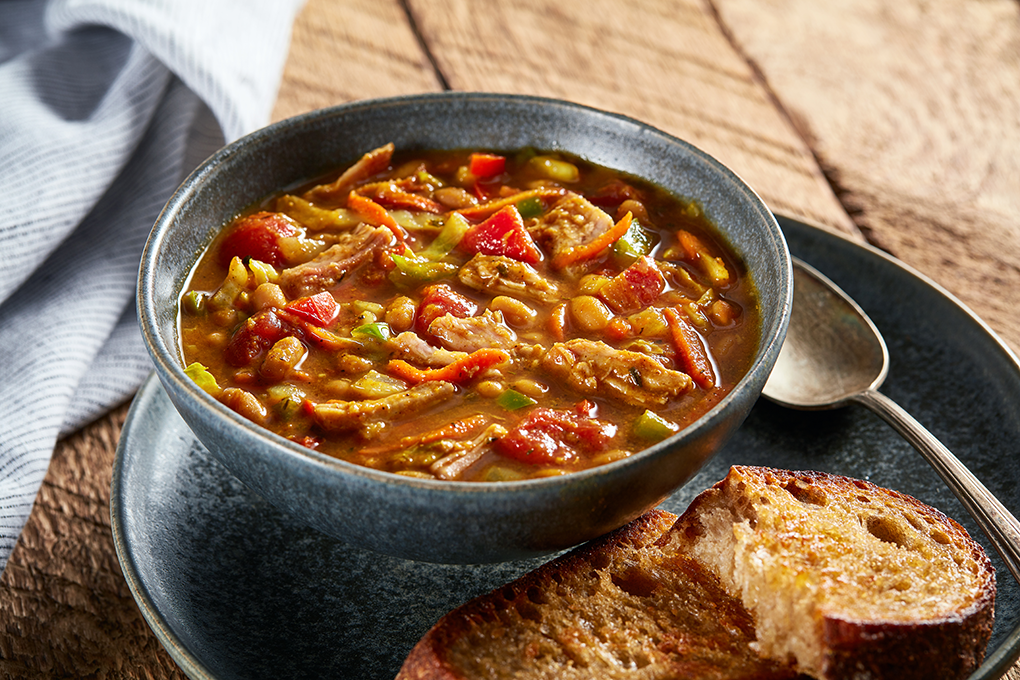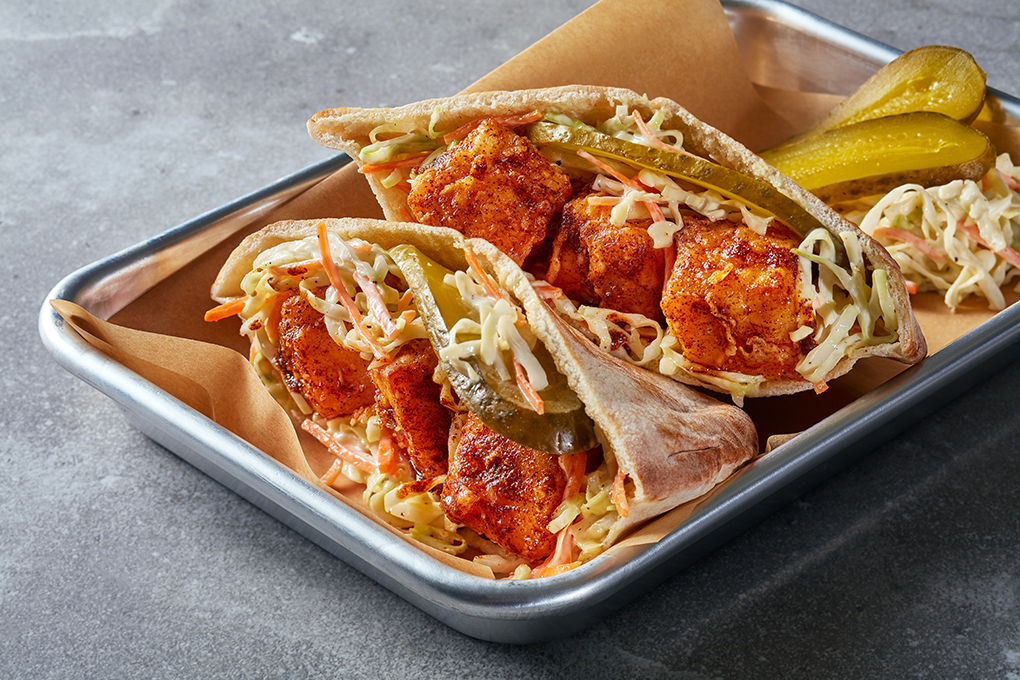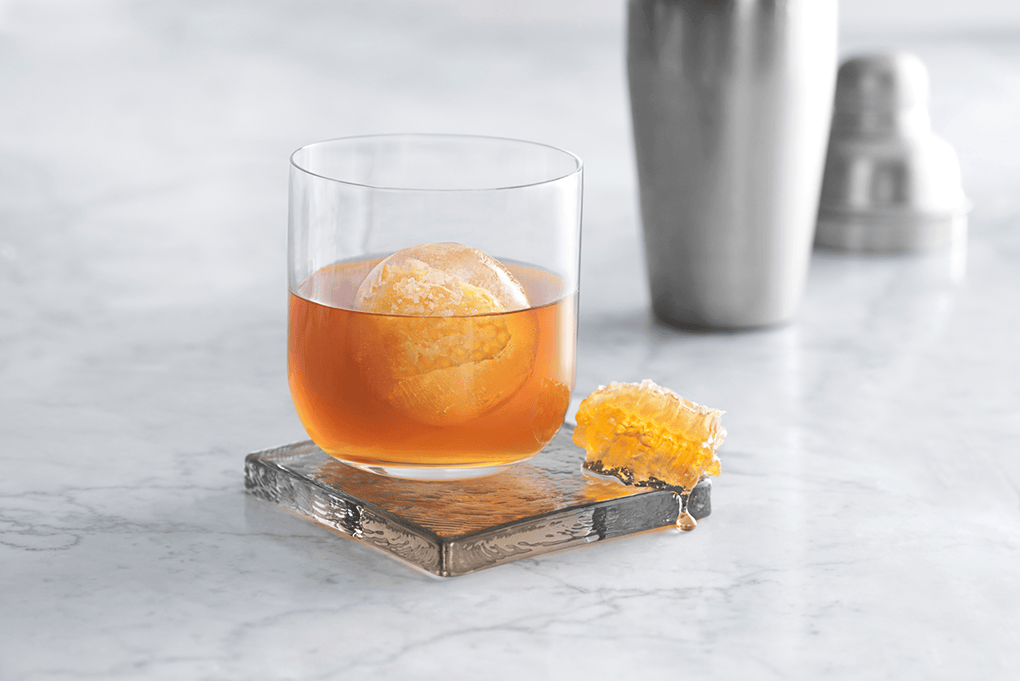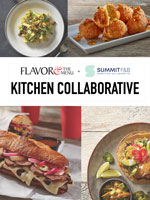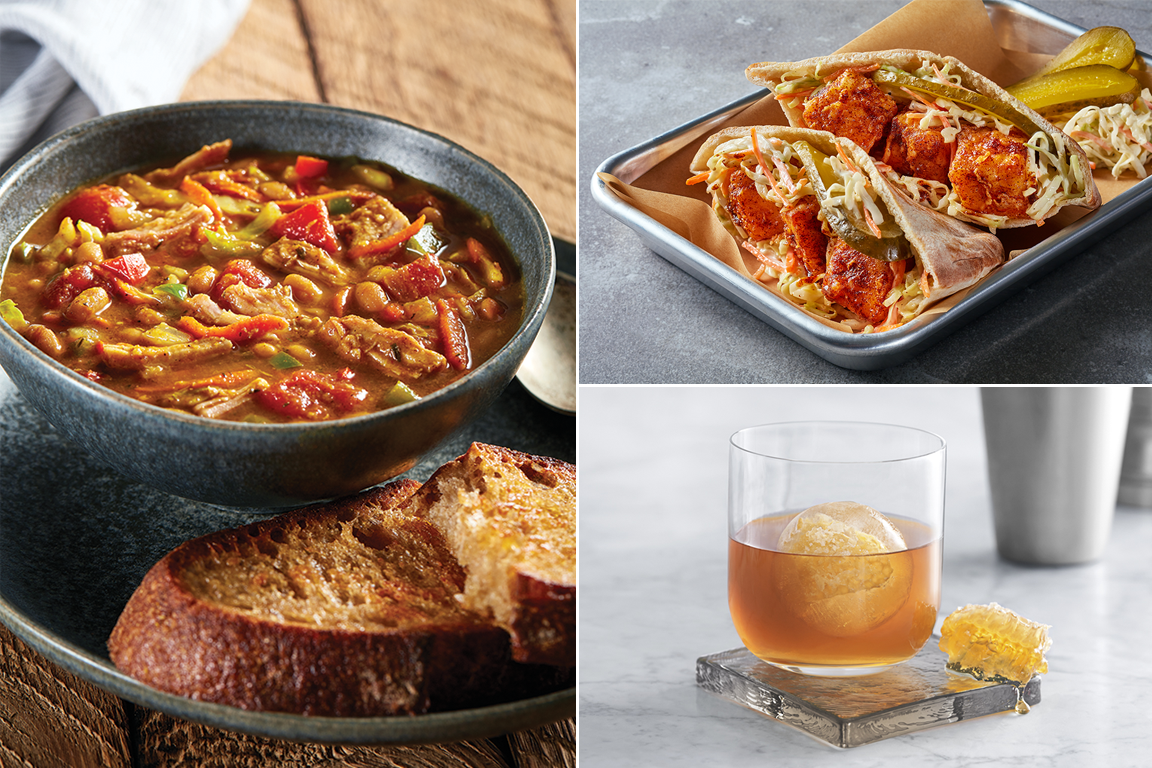

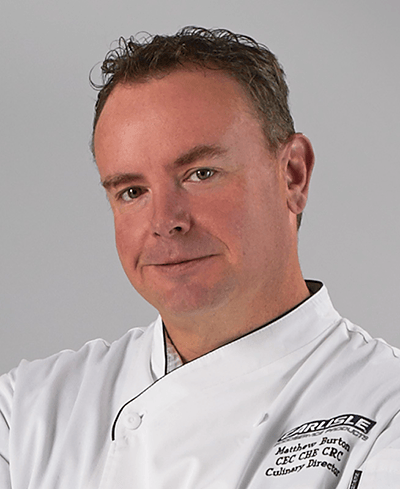
Matt Burton, CEC, CHE, CRC
Director of R&D/Corporate Executive Chef
Dickey’s Barbecue Restaurants, Inc.
Kitchen Collaborative is a recipe-development initiative formed by Summit F&B and Flavor & The Menu. To fuel flavor innovation, a group of talented chefs partnered with sponsor brands and commodity boards to create recipes that showcase the passion and potential of our industry.
Whether a flavor system or menu trend is emerging, ubiquitous or enjoying an “everything old is new again” revival, Matt Burton, CEC, CHE, CRC, recognizes its potential and place on modern menus. The new Director of R&D/Corporate Executive Chef for Dickey’s Barbecue Restaurants characterizes himself as a “sales-minded chef,” always keeping an eye on the popularity and profitability potential for each new recipe idea. For Kitchen Collaborative, Burton tapped into the enduring appeal of comfort food (Baked Bean Chakalaka), the continuing expansion of Nashville Hot (Nashville Hot Paneer Pita) and the resurgence of the old fashioned (Honey Ginger Old Fashioned). With each trend interpretation, Burton arrives at the sweet spot intersection of flavor flair and savvy strategy.
Baked Bean Chakalaka
While Burton wishes he had a cool origin story about his introduction to chakalaka, a spicy vegetable signature dish in South Africa, the fact is that he discovered it when working for another chain and researching comfort foods from around the globe. “It’s really the ultimate comfort dish,” he says. Burton began trying variations on the dish at barbecue competitions, adding meat and changing the name for a more familiar reference, such as Creole Baked Beans. He characterizes it as a profitable “catch all” for bits of smoked meats and extra vegetables that otherwise might go into the trash. “It’s a perfect special to run after a barbecue event.”
This Baked Bean Chakalaka—aka “Baked Beans on Steroids,” says Burton—is made with many flavorful ingredients, including sorghum beer, onions, curry powder, thyme, smoked paprika, ginger, bell peppers, garlic, jalapeños, tomato paste, smoked ham hock, smoked braised pork shoulder and Bush’s Best® Bean Pot Baked Beans. “Using convenience products like Bush Beans makes it so simple to ‘kick it up a notch,’ as our old buddy Emeril would say,” notes Burton. “This dish is layered with flavors, from sweet to robust. I called out the traditional umqombothi (maize, sorghum, water) beer to call attention to the heritage of this dish, but it’s worth finding. It adds layers of complexity that even the best tasters won’t figure out, pulling together different spices, sweetness and bitters.”
In Africa, chakalaka is more of a relish or condiment than the main dish that Burton created, but he acknowledges it would make a great relish or spread. He sees African cuisine continuing to find its way to American menus, often more as inspiration than as a bona fide recreation. “The bowl idea, which has been around for a while, is a nod to African cuisine, as are one-pot meals with rich broths, vegetables, pounded yams, plantains, pieces of meat and rice,” he says.
Nashville Hot Paneer Pita
Asked to showcase a California paneer, Burton explored its flavor, texture and performance characteristics before settling on a direction. “It doesn’t melt. It eats like meat; it really made me think of chicken. I marinated it, grilled it and added it to salads,” Burton recounts. “Then, I was reminded of when I breaded hen-of-the-woods mushrooms as a vegetarian chicken finger dish. Plus, with Nashville hot being everywhere—pow! The idea for the Nashville Hot Paneer Pita was born! And, frankly, it’s awesome.”
Burton brines low-sodium paneer in pickle juice with spicy peppers. “The cheese has an amazing bite and flavor—a lot like a curd and a bit salty,” he says. “I wanted that saltiness to be a flavor. And I always use a brined chicken when grilling.” Next, Burton dredges the cheese in seasoned flour and a buttermilk-eggs-hot sauce mixture and deep fries it to a golden brown. Slices are brushed with a signature housemade hot oil (made with cayenne, brown sugar, ghost pepper flakes/powder, smoked paprika, garlic powder, cumin, salt and pepper) and tucked into a warm pita, topped with pickles and creamy slaw.
“Honestly, this bad boy is smoking!” says Burton of the overall heat level of his handheld. “This cheese sandwich is going to reach out and slap you. Of course, you can always tone it down by forgoing the oil or cutting back on some of the peppers, but it’s a great build: the heat, the sour from the pickle, the cool, creamy slaw and the neutral cheese center.”
Burton notes that since paneer doesn’t melt easily, it holds up well in this application. “The texture is much like white meat chicken when fried, so this dish is a great vegetarian alternative. I am the furthest from a vegan or vegetarian, but if it’s important to my customers, it’s important to me.”
Honey Ginger Old Fashioned
“Old fashioneds have become so popular—as has bourbon in general—but if you’re a first timer, oh, it burns! Many love that burn, but others want it rounded out,” says Burton. “We have been working to mellow the burn.” Inspired by the honey whiskeys introduced by major distillers, Burton sought to create his own version.
Burton’s Honey Ginger Old Fashioned features bourbon, rye, orange blossom honey, black walnut bitters and ginger liqueur. It’s garnished with orange peel and candied ginger and served over an ice sphere enclosing frozen honeycomb. The orange blossom varietal works well with the bitters, says Burton, acknowledging that any sweet or neutral flavored honey would also work. “We didn’t want flavored honeys that change the dynamic, like berries, truffle or hot.”
The drink is a master class in attention to detail. The first trick is to “flavor the glass,” spritzing it with ginger liqueur before adding the drink ingredients so as not to “bruise” the cocktail, explains Burton. “We chose a rye because it’s a bit harsher than a standard bourbon, although we mixed it with a classic Old Forester, one that is aged, with a great smokiness and mouth feel. But the honey is the hero ingredient here. It not only adds sweetness, its emulsification properties ‘glue’ the alcohols together.” He notes that it’s important to stir the drink and not shake it, so the honey can bind the other ingredients properly and not produce a froth.
The eye-catching ice sphere with the honeycomb frozen within takes three days to make! “It slowly adds sweetness as it melts, so your final sip is like dessert.” Burton is a firm believer in the profit potential of creative presentations. “I challenge my team to sell ice—it’s a food. It’s been given away forever, but it can make a lot of money,” he notes, citing other examples, such as a sphere made from grenadine with a cherry stem sticking out or clear ice filled with “ghost” smoke. Burton is all about tapping the creative synergy between the bar and the kitchen. The bottom line, he says, it must taste good. “Leave them wanting one more sip.”
Project Management: Summit F&B
Photography: Carlos Garcia // Food Styling: Peg Blackley







